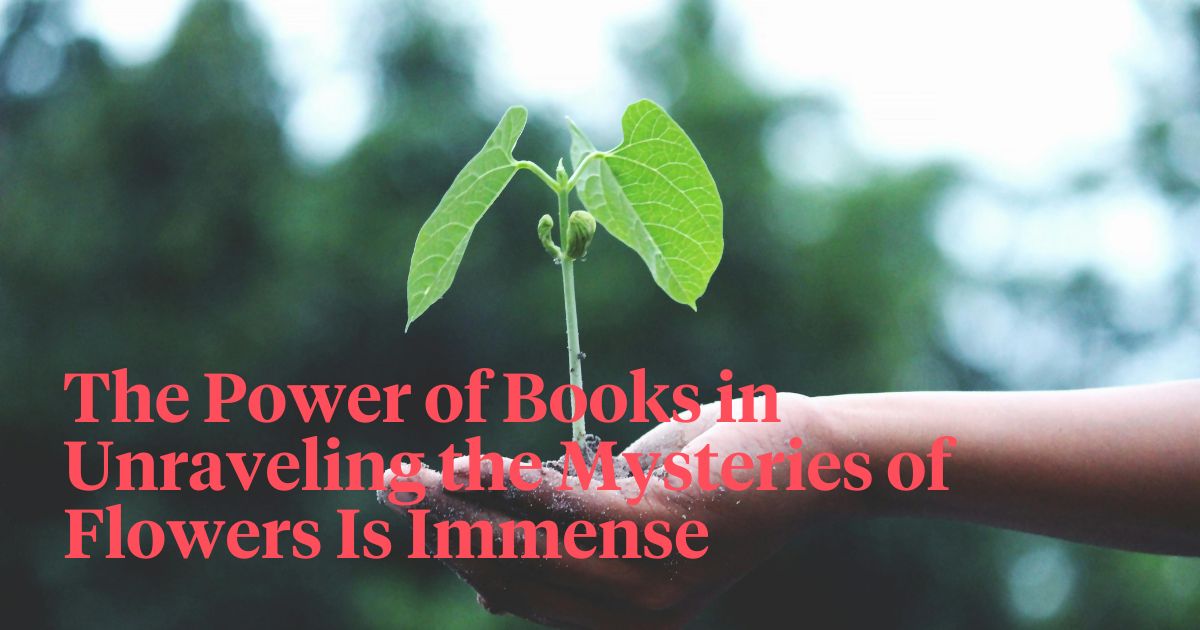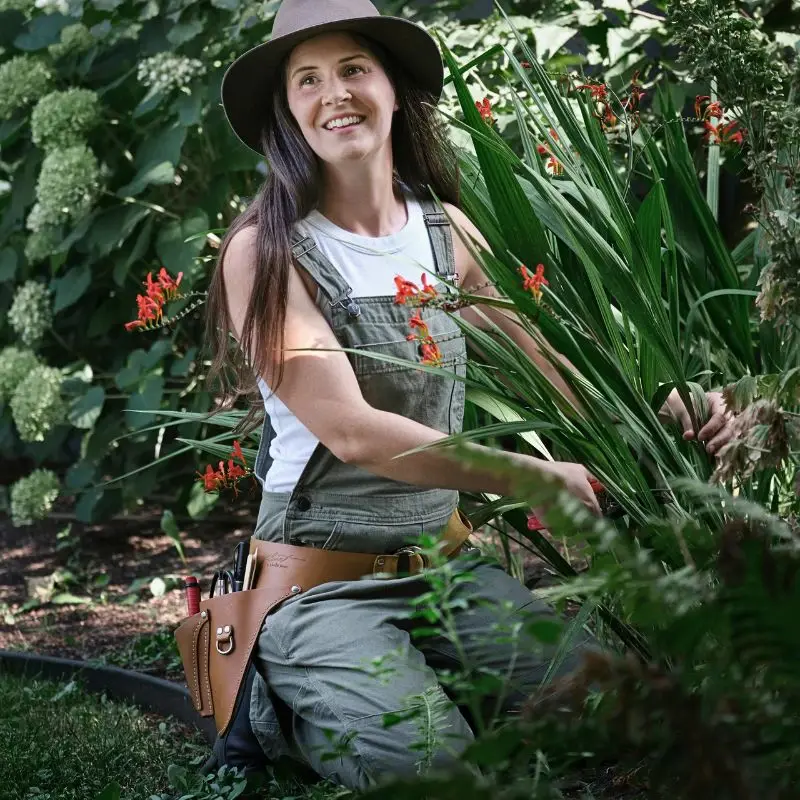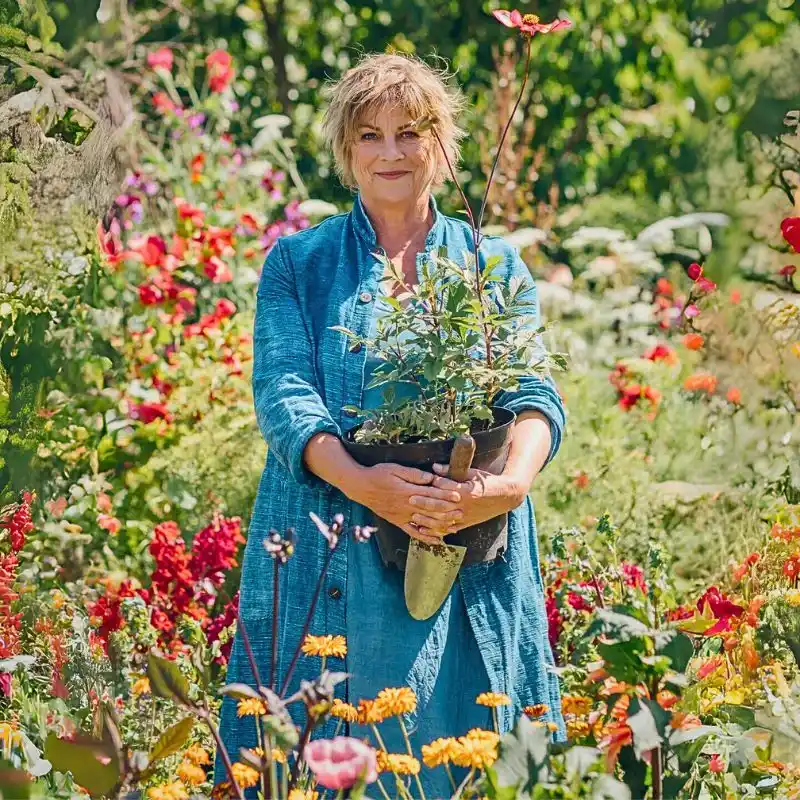Flowers have captivated and fascinated humans for centuries. Their beauty, fragrance, and delicate nature have inspired countless works of art, poetry, and music. But beyond their aesthetic appeal, flowers have also played a significant role in our understanding of the natural world. One avenue through which we can explore the world of flowers is floral literature.
Floral literature encompasses a wide range of written works that delve into the world of flowers, providing insights into their symbolism, history, cultivation, and cultural significance. From ancient texts to modern-day novels, the power of books in unraveling the mysteries of flowers is immense.
In this article, we will embark on a journey through the captivating world of floral literature. We will uncover the rich history of this genre and its evolution over time. From ancient texts steeped in flower symbolism to the romanticism of floral poetry, we will trace the roots of floral literature and its profound influence on various aspects of human life.
So, join us as we embark on this journey through the pages of floral literature, discovering the hidden meanings, practical knowledge, and artistic inspiration that awaits us.
The History of Floral Literature
Ancient Texts and Flower Symbolism
Throughout history, flowers have captivated the human imagination, and their significance has been documented in various ancient texts. Ancient civilizations, such as the Egyptians, Greeks, and Romans, recognized the profound symbolism that flowers held and incorporated them into their literature.
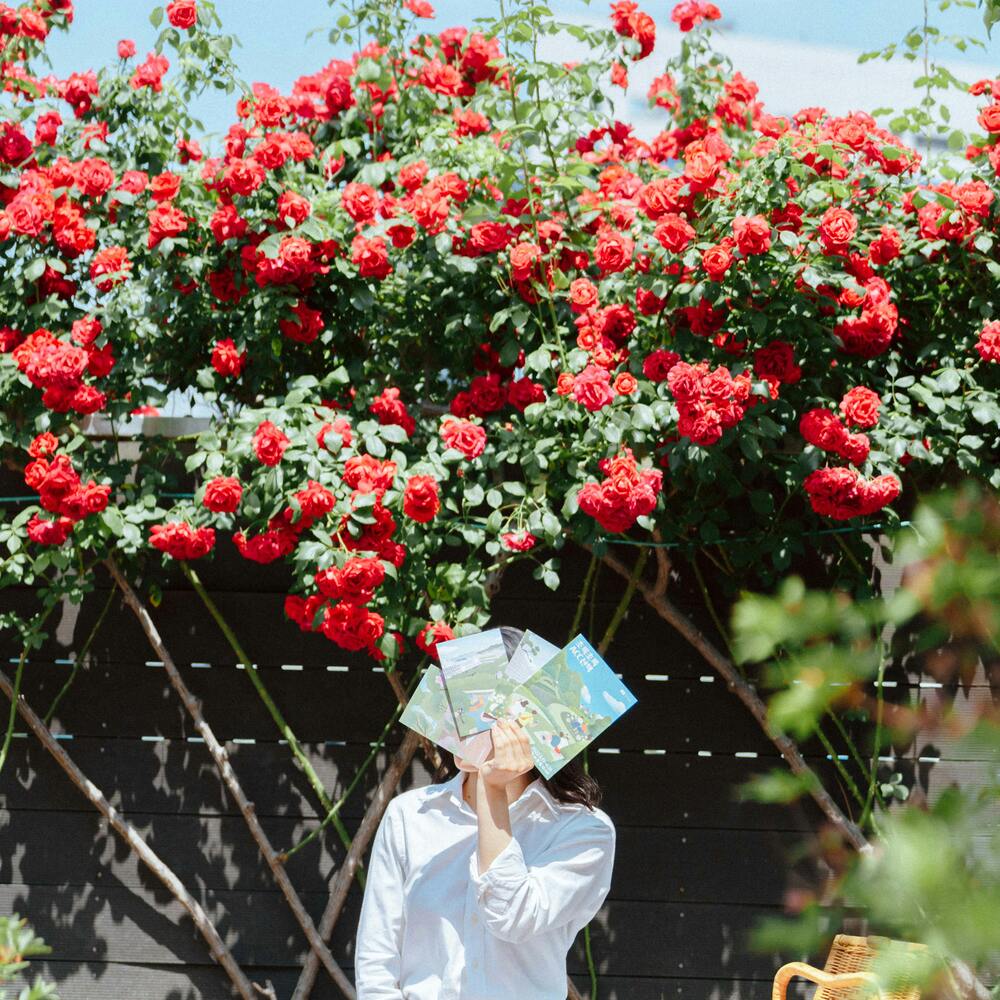
In ancient Egypt, the lotus flower was revered for its association with rebirth and spiritual enlightenment. Hieroglyphs and papyrus scrolls depicted the lotus as a symbol of creation and the cycle of life. Similarly, the Greeks celebrated flowers in their mythology, with the goddess Chloris being associated with flowers and the renowned poet Homer often using floral imagery in his epic works. The Romans, too, had a deep appreciation for flowers, as seen in the writings of Ovid and Virgil, who used flower symbolism to convey emotions and themes in their poetry.
Floral Poetry and Romanticism
Flowers continued to inspire literary works during the Romantic era, where poets sought to explore the beauty of nature and express their innermost feelings. Romantic poets like William Wordsworth, John Keats, and Percy Bysshe Shelley turned to flowers as a means of conveying their emotions and connecting with the natural world. Their poems often depicted flowers as metaphors for love, beauty, and the fleeting nature of life.
Botanical Illustrations and Herbals
In the captivating world of floral literature, the exploration of flora goes far beyond the realms of poetry. Delving into the annals of history, we uncover a trove of botanical illustrations and herbals that have shaped our understanding of the natural world. Transport yourself back to the Renaissance, a time of enlightenment and discovery, where intrepid botanists and explorers like Leonhart Fuchs and John Gerard embarked on daring expeditions to uncover the secrets of nature's bountiful flora.
With quill in hand and the spirit of adventure in their hearts, Fuchs and Gerard meticulously documented the diverse array of plants they encountered on their journeys. Their tireless efforts resulted in exquisitely detailed botanical illustrations that captured the essence of each flower, as well as vivid descriptions that brought these plants to life on the pages of their herbals.
These herbals, revered as invaluable references, served a multitude of purposes. Physicians relied on them to unlock the medicinal properties of plants, herbalists sought guidance in harnessing nature's healing powers, and gardeners drew inspiration from the intricate beauty showcased within their pages. With every stroke of the brush and carefully chosen word, these early herbals not only provided essential information on the healing properties of medicinal plants but also celebrated the unparalleled beauty of flowers in all their glory.
As we embark on our own journey, let us not forget the rich heritage of botanical exploration and its profound impact on our understanding of the natural world. Whether you are a travel enthusiast seeking to expand your knowledge of flora in different regions, an English learner wanting to explore the world of travel English, or a language enthusiast eager to expand your vocabulary of flora-related terms, the history of floral literature offers a treasure trove of captivating stories and profound insights. So, let us immerse ourselves in the world of botanical wonders and unlock the secrets of the language of flowers, one word at a time.
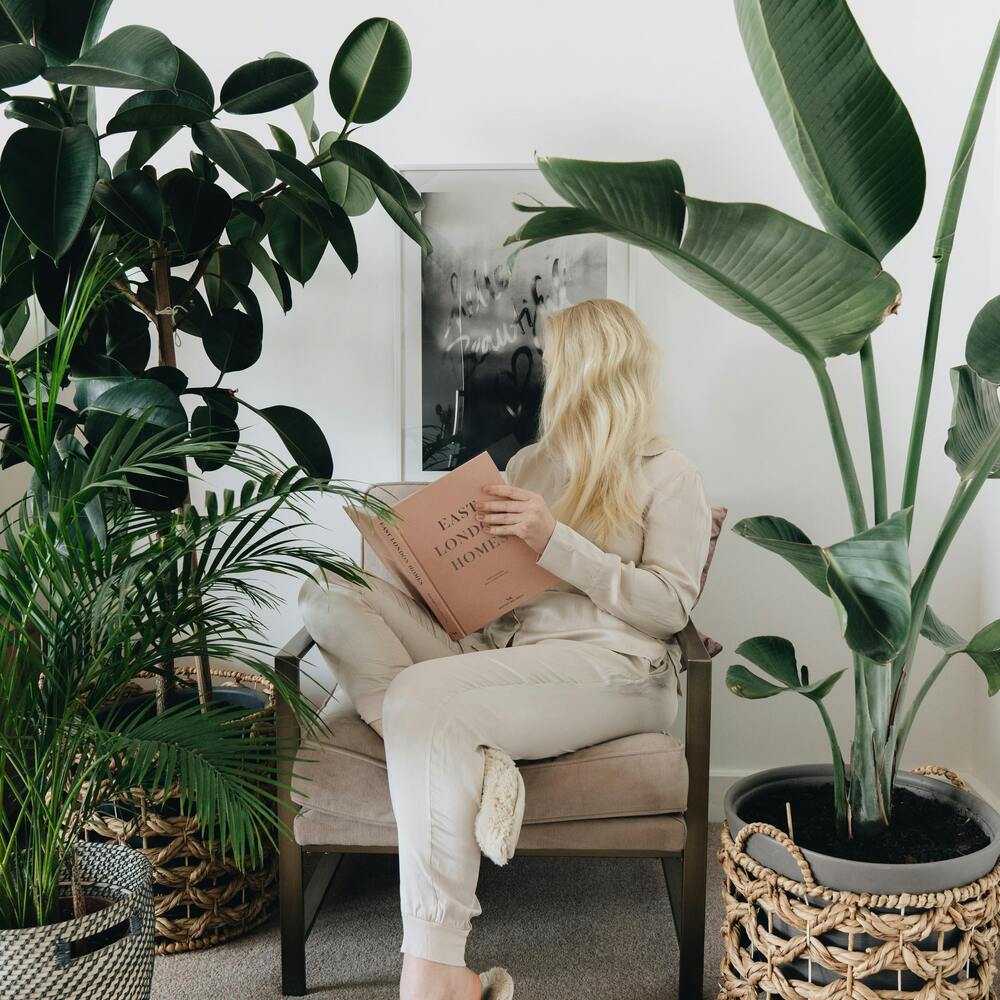
Exploring the Diversity of Floral Literature
Flowers have captivated human imagination for centuries, inspiring a wide range of literary works that delve into their beauty, symbolism, and significance. Floral literature encompasses various genres, from practical gardening guides to encyclopedias, and from fictional narratives to non-fictional explorations. In this section, we will explore the diverse world of floral literature, revealing the different ways in which books have contributed to our understanding and appreciation of flowers.
Gardening Books and Guides
Gardening books and guides serve as indispensable resources for both novice and experienced gardeners. These publications provide invaluable information on plant cultivation techniques, soil conditions, pest control, and seasonal care. With detailed instructions and expert advice, they enable readers to create and maintain their own flower gardens, transforming ordinary spaces into vibrant displays of nature's splendor. Not only do these books impart practical knowledge, but they also foster a deeper connection between individuals and the natural world.
Flower Encyclopedias and Dictionaries
Flower encyclopedias and dictionaries are treasure troves of botanical knowledge, presenting comprehensive information about different species, their characteristics, habitats, and cultural significance. These reference books serve as invaluable tools for botanists, researchers, and flower enthusiasts alike.
From the delicate petals of a rose to the exotic allure of an orchid, these books allow us to embark on a journey of discovery through the vast world of floral diversity.
Floral Fiction and Non-Fiction
Floral literature is not limited to practical or academic works; it also encompasses a rich assortment of fiction and non-fiction books in English for adults that explore the emotional and symbolic dimensions of flowers. Through imaginative storytelling, floral fiction transports readers to enchanting worlds where flowers take on a life of their own. These narratives often intertwine themes of love, loss, and personal growth, using flowers as powerful metaphors for human experiences.
On the other hand, non-fiction books delve into the historical, cultural, and scientific aspects of flowers, shedding light on their role in art, literature, and society. By exploring the intersection of flowers and human existence, these books deepen our appreciation for the natural world and the profound impact it has on our lives.
Whether it is through gardening guides, encyclopedias, or imaginative narratives, floral literature invites us to explore the intricate beauty and symbolism that flowers offer. By immersing ourselves in these texts, we not only gain practical insights but also develop a deeper connection with nature, fostering a profound appreciation for the wonders that bloom around us.
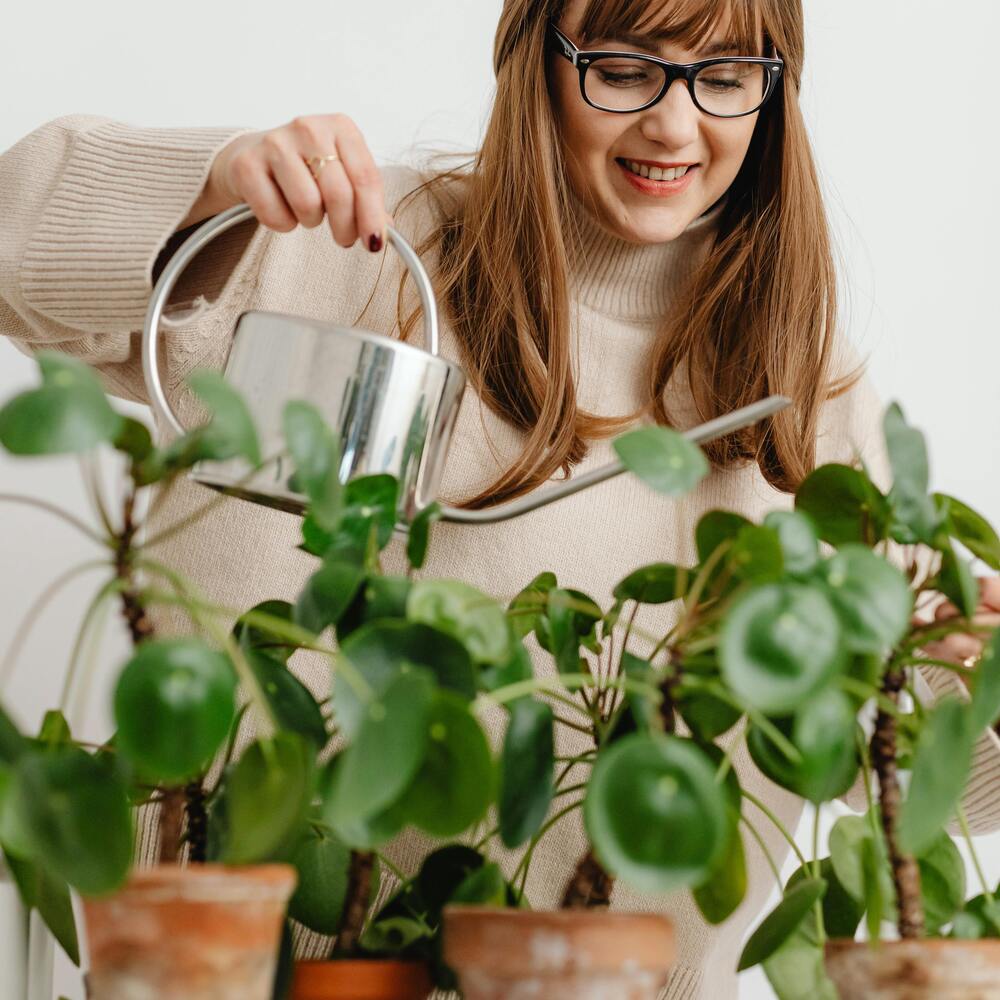
The Influence of Floral Literature on Art and Culture
Floral literature has not only captivated readers throughout history but has also left an indelible mark on various art forms and cultural expressions. The influence of these written works on art and culture is undeniable, as they have inspired and shaped the creative endeavors of countless individuals. From painting and sculpture to fashion and music, the power of floral literature can be seen in a multitude of artistic interpretations.
Floral Motifs in Painting and Sculpture
One of the most prominent ways in which floral literature has influenced art is through the incorporation of floral motifs in painting and sculpture. Artists have long drawn inspiration from the vivid descriptions and symbolism found in floral literature, translating them onto canvas or sculpting them into three-dimensional forms. Whether it be the delicate petals of a rose, the vibrant colors of a sunflower, or the intricate patterns of a hibiscus, these natural elements have served as a rich source of inspiration for artists across different periods and styles.
Flower-inspired Fashion and Design
Floral literature has also had a profound impact on the world of fashion and design. The beauty and elegance of flowers have been translated into clothing, accessories, and interior design, with designers drawing inspiration from the descriptions and visual imagery portrayed in floral literature. From floral patterns on fabrics to intricate floral motifs on jewelry, these artistic interpretations bring the enchanting world of flowers to life, allowing individuals to adorn themselves and their surroundings with the vibrancy and allure of nature.
Floral References in Music and Poetry
The influence of floral literature extends beyond the visual arts and permeates the realms of music and poetry. Poets and songwriters have often found solace and inspiration in the natural world, using flowers as a metaphor for love, beauty, and the human experience. The evocative language of floral literature has shaped the lyrics of countless songs and the verses of numerous poems, allowing audiences to connect with the emotions and sentiments conveyed through these delicate and intricate symbols.
Through the integration of floral references, musicians and poets have been able to create lyrical landscapes that transport listeners and readers into a world of blooming gardens, fragrant blossoms, and the ephemeral nature of life itself. The influence of floral literature in these art forms not only enriches our cultural heritage but also serves as a reminder of the enduring power and significance of flowers in our lives.
Conclusion
Throughout history, floral literature has played a significant role in unraveling the mysteries and beauty of the world of flowers. From ancient texts and botanical illustrations to modern gardening guides and floral fiction, books have provided us with a deeper understanding and appreciation of the natural world.
In conclusion, floral literature is a powerful tool that not only educates and enlightens but also inspires and captivates. It serves as a bridge between the realms of science, art, and human emotion, allowing us to explore the intricate relationship between humans and flowers. Whether it's through ancient texts, gardening guides, or flower-inspired fashion, the world of floral literature continues to enchant and enrich our lives, providing us with endless opportunities to discover, understand, and celebrate the beauty of flowers.

